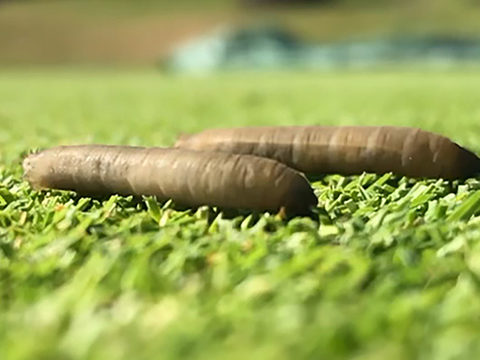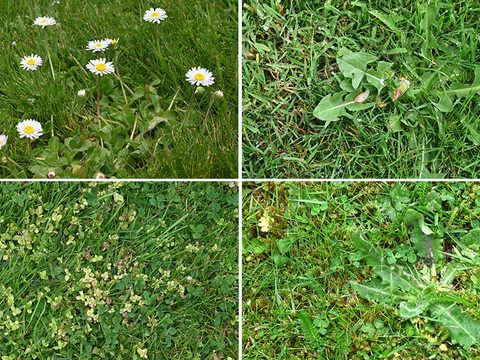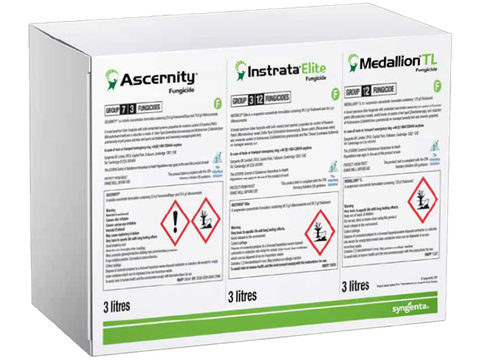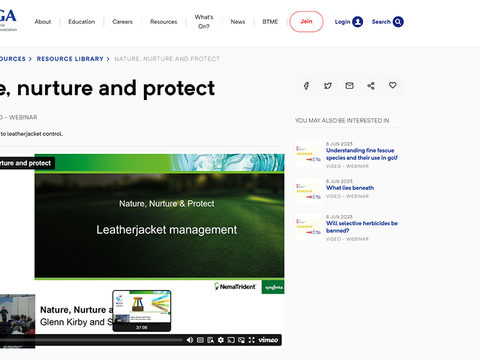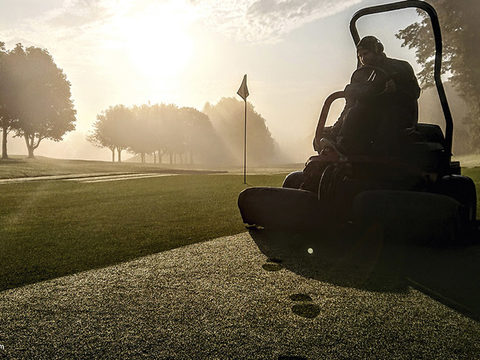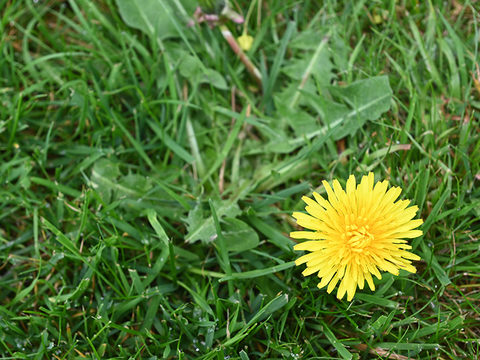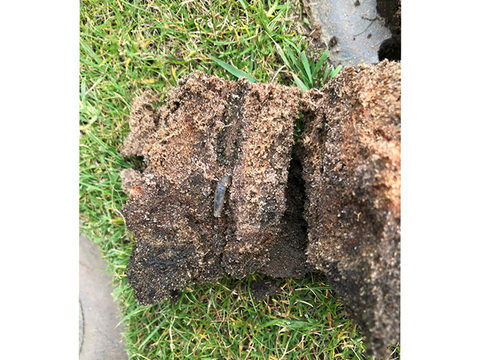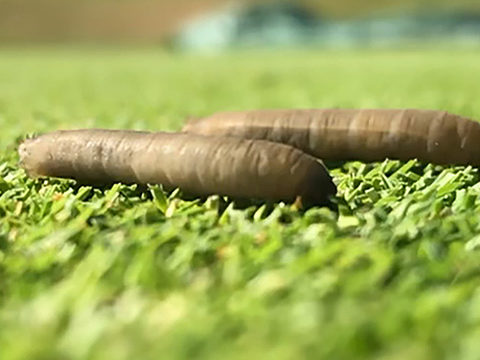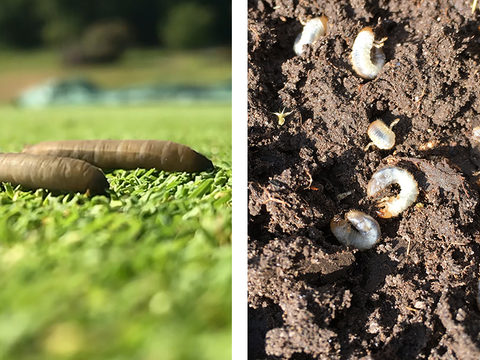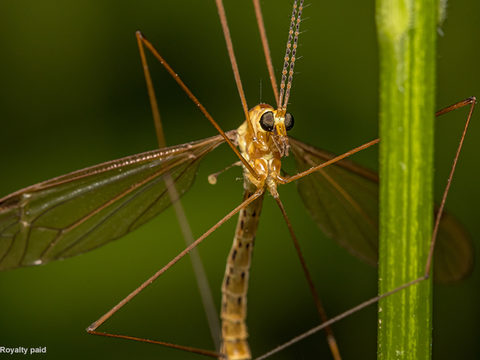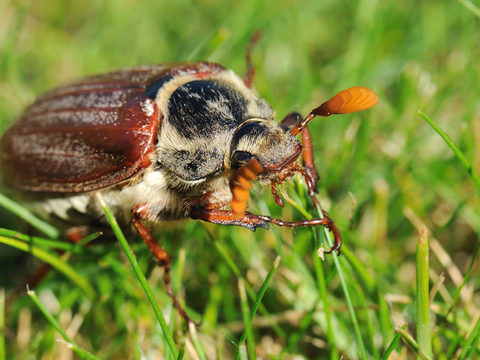GreenCast in UK and Ireland - Managing links rough for better playability
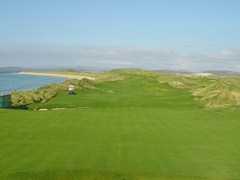
Ireland is gifted with some of the best links course in the world and visitors travel from all over the globe to experience the challenges they present. However, is that challenge becoming too demanding with the native roughs so thick with grass density that losing balls just off fairways is becoming all too common? - writes Eddie B Connaughton, BSc Agronomist.
The wispy Fescue roughs (Fig. 1, below) are part of our heritage when experiencing true links conditions, but all too often now the roughs are a tangled mix of pasture grasses containing Ryegrass and Yorkshire Fog.

These pasture-type species have a dense growth canopy that, when allowed to grow (Fig. 2, below), will compete with the native Fescues and eventually dominate the sward coverage. This is leading to slow play, excessive loss of golf balls and frustration for the golfer who should be enjoying the experience of playing links golf.
The visual impact of wispy Fescue growing alongside a fairway or as a backdrop to a green complex or sand bunker is stunning in its beauty yet very playable for the errant golfer.

As golf struggles to attract new business in a downturn, it is very important to enhance the enjoyment and playability of all courses, but especially our links.
I am reminded of renowned Course Architect Dr. Alister Mackenzie's 10th principle of designing an ideal golf course: "There should be a complete absence of the annoyance and irritation caused by the necessity of searching for lost balls".
This principle is as important today, as it was in the 1920's, in growing the game of golf to a wider public who are turned off from five hour rounds and losing too many golf balls.
Managing Links Rough
Most links courses will have a series of different cutting heights from fairways, semi-rough, primary maintained rough and natural unmaintained rough. In order to create the desired links effect of long wispy grass the unmaintained rough is favoured around play corridors on each hole.
These play corridors will vary from course to course depending on the dune structures and their proximity to centre lines of play. They will also vary regarding grass species composition in the maintained and unmaintained rough i.e. If fescue is the dominant species of the unmaintained rough, there is more scope to allow it come closer to fairway lines as a ball can be easily found (Fig. 3). However, the recovery shot has a greater degree of difficulty than from shorter grass.`
If the rough has a dominance of Ryegrass or Yorkshire Fog (Fig. 4, below) close to play lines it will mean more cutting to allow pace of play proceed at an acceptable level. When the undesirable grass species are dominating, allowing unmaintained rough to develop close to play lines is a problem for playability and enjoyment of playing links golf.

Cultural Control
In the old days control of undesirable grass species was taken care of by grazing the links with sheep, but as the game and machinery developed mechanised mowing became the standard. However, as golf became more popular from the late 60s to the 90s the methods of mowing, fertilising and watering all changed dramatically thus affecting the grass species which made up the natural links land. This in turn led to more intensive mowing of links rough to have it playable and presentable to the point where large areas of rough were cut and presented in a manicured condition.
As with most things in life, "trends" take place and golf is not immune to them. While the maintained rough was important in growing the game from the 60s to the 90s it also contributed to the loss of the natural links look of wispy golden brown Fescues blowing in the wind close to the main play lines from tee through to green.
With a desire to return links rough to its natural condition, unmaintained rough became popular again simply by letting the grass grow longer closer to the play lines. The aesthetic effect was instant with a wide variety of grasses growing such as Fescue, Rye, and Yorkshire Fog etc.
This provided the wild look that was associated with playing links golf, but, after successive years of no maintenance in these roughs, the coarse pasture type grasses started to dominate and overtake the native Fescues. This ultimately resulted in excessively dense roughs in which it was impossible to find balls with the reduction of playability and enjoyment for the average golfer.

It is well known that courses are toughened up for professional and amateur championships by narrowing fairways and growing rough. This is very acceptable for a particular championship as the organisers wish to reward the best and most accurate player with the top award.
However, maintaining such a high degree of difficulty for regular golfers who wish to play those Championship links is affecting playability and enjoyment in my opinion. There is also a knock on effect of other links courses trying to toughen their layout to Championship standard by simply allowing deep rough to grow.
It is very encouraging to observe around the country that links course are now addressing the problem of unplayable rough tooclose to play lines with cultural management techniques i.e.:
• Annual mowing and removal of grass
• Deep scarifying to help reduce the grass canopy density
• No artificial fertilisation or watering
• Allowing natural regeneration of Fescues by reducing competition from the coarser pasture grasses
• Overseeding with Fescues to encourage re-establishment
Most of these cultural practises have been deployed, in the fight to remove Ryegrass from links turf for many years, with limited success, especially in closely mown turf. This is due to the ryegrass species being perennial in growth habit and very hard wearing, thus withstanding aggressive cultural techniques, often at the expense of the more desirable finer species.
Integrated Management Control
While traditional cultural practises will certainly help with managing unmaintained dense rough that are dominated with the Fescue species, I do not think it will be sufficient to eradicate the Ryegrass from these areas. I feel there should be an integrated management approach using herbicides and cultural practises to eradicate the unwanted Ryegrass and Yorkshire Fog from the native rough areas.
Over the last two years I have been working with Stephen Hoey, Links Superintendent at Laytown & Bettystown Golf Club to affect this management programme with very successful results.
A new class of herbicide, Rescue, was specifically developed for fine turf in 2007/09 and this selectively removes Ryegrass from Fescue and Poa dominated swards. The active ingredient, Pinoxaden, inhibits the ACCase enzyme, prevents fatty acid biosynthesis and prevents the formation of biomembranes, which have a direct impact on specific grass species development following use.
The Rescue herbicide was approved for use on amenity turf and the trials carried out showed very positive results in removing Ryegrass and Yorkshire Fog from Fescue (or Poa) swards. While most of the trials were carried out on fine turf, we felt it would have a major impact on managing the unmaintained rough at Laytown & Bettystown.


The club were experiencing negative feed-back from visitors and members about deep penalising rough slowing down play and losing golf balls. We did not want to simply mow the grass down to lose the links look, so a series of trials were carried out using the Rescue herbicide (Fig. 5 & 6, above) to observe its effects in deep rough. As Figure 6 shows, the herbicide was effective at damaging the coarse grasses present.

As the rough was a tangled mix of coarse and fine grasses, it was decided to "pin harrow" (Fig. 7, above) all the treated areas after 4-6 weeks to remove the dead grass, thus leaving the finer fescues in place. This also opened the grass canopy at soil level to allow existing Fescues to grow without competition from the coarse grasses (Fig. 8, below).

The first application of Rescue was made in the autumn, followed up again in spring, and again the following autumn, along with harrowing for an excellent result, as the rough went from being unplayable to playable in the space of 18 months (Fig. 9 & 10, below).


More importantly we were able to retain the links look in the roughs through harrowing in the autumn rather than cutting. The physical cutting and removal of unmaintained rough will continue to form part of some links programmes, but the use of this herbicide to kill the ryegrass provides another management tool to restore roughs to a links texture in a realistic time frame.
In using Rescue as part of a grass management strategy it is very important to understand that it will kill Ryegrass and Yorkshire Fog wherever it is used on the links. Therefore, be prepared for bare areas that may need overseeding where those species are dominating.
Conclusion
I started out by stating the need to manage links rough for better playability so that golfers can enjoy the links experience in a timely fashion without losing too many balls per round.

The use of the integrated management programme of cultural and herbicide treatments will remove the Ryegrass and Yorkshire fog from the unmaintained rough and allow the native fescues to regenerate to a dominant position once again. The potential of this integrated management system is to create a wispy fescue dominated rough where a ball can be found (Fig. 11, above) without annoyance and irritation, as deemed so important by Dr. Alister Mackenzie.
This article first appeared in the GCSAI magazine, Greenside, in March 2012. Reproduced with permission of Eddie Connaughton and GCSAI.

